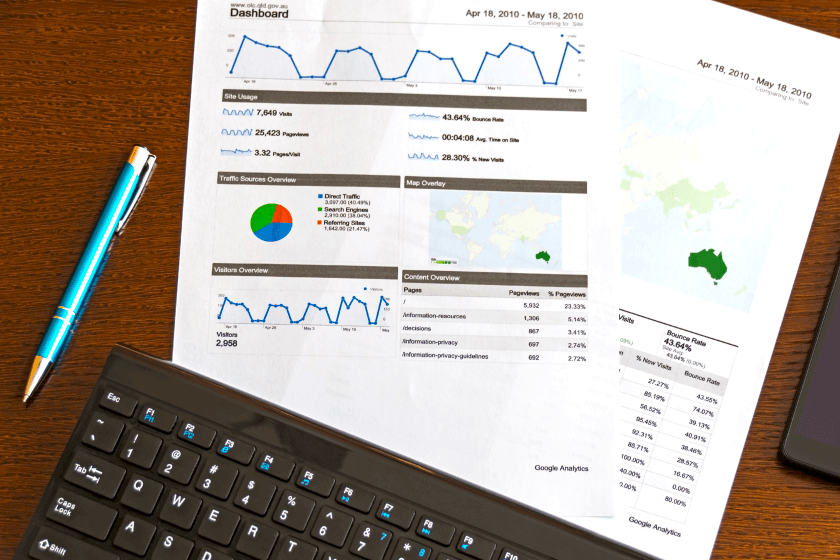Invest
How to invest in the share market: A beginner's guide
For most people, the share market remains one of the most opportune places to invest, albeit at times a daunting one. But how do you get started?
How to invest in the share market: A beginner's guide
For most people, the share market remains one of the most opportune places to invest, albeit at times a daunting one. But how do you get started?

Despite the 2007-2008 global financial crisis wiping trillions of dollars off the share market seemingly overnight, it remains one of the most popular and accepted ways of investing your money, for good reason. In the eight years since 2009, the value of the ASX has almost doubled, proving that despite its volatility, the stock market is stubbornly resilient.
What do you need to consider before you dive into the world of equities?
What are you investing for?
Knowing what you’re investing for will help you to decide where to invest. People make a return on owning shares in two ways.

- Capital growth
If you buy a share at $1 and sell it for $2, you’ve doubled your money. While you’ll be paying capital gains tax (CGT) on any profits, you’ll only have to pay it on 50 per cent of your profit if you own it for more than 12 months. - Dividends
Some companies pay out their profits in the form of a dividend to investors, usually once or twice a year based on the number of shares you own.
See: How to use fully franked credits
Cash flow
Like all investing, cash flow is one of the most important considerations when looking at the share market. The reason for this is simple. If all of your money is tied up in shares and an unexpected bill arrives, you’ll be obliged to sell stock at what will likely be an inconvenient time, meaning you won’t receive the return you necessarily could from your investment.
The first step is to guarantee you are across your finances, the value of what you’re buying and any minimum investment requirements.
“With any strategy, we always like to make sure people have built up their emergency cash reserves before they start investing, and while this amount is different for everyone, as a general rule of thumb you should aim for three months of expenses,” Firefly wealth director Adele Martin said.
“There can also be minimum amount required for certain types of investments, often $5,000 to buy into something like an ETF [equity-traded fund],” Ms Martin said.
Diversification
Another major consideration of any investor is to ensure that if a certain sector does poorly, you have other investments to counter-balance any losses.
The logic follows that certain equities will perform well when others perform poorly and vice versa. A diversified investor can cushion their losses on some stocks with the returns from others, meaning you won’t have to watch the value of all your investments vanish at once.
Within the equity market, you can do this in part by holding stocks from different sectors and different countries.
However, most investors don’t necessarily want to have to buy and balance 30 different stocks, and absorb the transaction cost and analysis that that requires in order to build a diversified equity portfolio.
“My advice is to get your asset allocation right and then simplify your investment processes somewhat so that you're not overly focused on the minutia and are missing the big picture,” BetaShares chief economist David Bassanese said.
The aforementioned ETFs, which are an increasingly popular way to get easy access to a variety of sectors, and stock markets, could be the answer to the diversification problem.
“You can buy a diversified Australian equity fund that will give you that exposure to the market. If you still want to play the stock market, you could use half your money to pick individual stocks and put the other half in a diversified fund,” Mr Bassanese said.
In essence, ETFs can do the ‘heavy lifting’ of your equity portfolio, spreading your investment exposure around.
An alternative would be an index fund where investors essentially buy into the entire stock market such as the ASX 200 or the S&P. As the share market grows over the long term, so does the value of your share.
“I’m a massive fan of index funds. They’re easy to invest in, you don’t have to constantly check up on them, and now with technology, you’ve got platforms out there that mean you don’t have to have a minimum account balance,” Ms Martin said.
“Obviously, you have to have a long-term time frame to invest in them but if you want to start early and sit and hold an investment, index funds can be an attractive option.”
While holding a diversified equity portfolio, or index fund, won’t completely eliminate your risk exposure, it can help. This is particularly when investing in the ASX for example, which is dominated by the financial sector, largely in the form of the big four banks and the resource sector. With the financial sector making up around 45 per cent of the index value and resources accounting for 14 per cent, a downturn in either sector can hurt the entire stock market value.
Additionally, entire stock markets can quickly plummet as was the case during the GFC. A popular method to balance your exposure to equity is to hold money in other assets, such as bonds or gold, that are negatively correlated to the equity market.
“If you are too exposed, maybe look at things like fixed-income bond type products, which you can buy directly on the ASX as well, which will give you yield and are somewhat less volatile,” Mr Bassanese said.
“If markets do go pear-shaped, bond funds tend to do well because central banks tend to want to cut interest rates, which gives them a boost.”
See: Why you should own your own age in bonds
Understand your time frame
While you may think of equity investors as the fast-talking stockbrokers trading minute-to-minute depicted in Hollywood films, this is a narrow representation.
While day traders may only hold a stock for minutes or hours, most equity investors have a significantly longer investment time frame.
Investors may hold index funds, for example, for several decades as a long-term buy and hold strategy.
Many fall in-between these two examples. Generally speaking, due to their volatility and costs of high- volume trading, equities are usually considered a longer term investment.
When deciding to invest in the stock market, the length of time you intend to invest and your life stage will affect the types of stocks you invest in.
Due to the inherent volatility of equity market, and the years sometimes required for the market to recover after a major crash, the more time you’re able to hold equities for, the better.
“If you’re in or near retirement and you’ve got around 100 per cent of your wealth in equities, that is probably a very high risk profile, and so you might really want to think about reducing that,” Mr Bassanese said
See: Why you should ‘buy-and-hold’ shares
Research your prospective investment
“If you don’t actually understand what you’re investing in or your adviser can’t explain it to you in a way that you understand, walk away,” Quantum Financial principal Claire Mackay said.
That’s sound advice in an age where there is a smorgasbord of complicated financial instruments. Oftentimes, the more complex or exotic an investment is, the more risk involved.
“While there’s a lot of interesting and exotic investments out there, when clients come to me with those, I say, ‘Look, it might be a winner, it might not. How much are you prepared to put in? Be prepared to lose all that money because it’s a punt’,” Ms Mackay said.
How to choose companies
If you do want to buy individual companies, you’re going to want to know what makes a good company and what doesn’t.
When analysing companies, it’s important to understand the fundamentals and ask some questions, Financial Spectrum director Brenton Tong said.
“Are they burning through cash because they’re building something great or because they have terrible management? Does the company have a solid history of winning? Or do they continually make costly mistakes?”
A company’s price to earnings (P/E) ratio is a useful tool for comparing same-sector companies to see what the market is valuing it at.
“If it’s trading at a higher P/E to the industry average, ask why. There could be a good reason, but if there isn’t, it’s possible it’s overpriced. Keep in mind that different industries tend to have different P/E,” Mr Tong said.
With companies’ value rising and falling on a minute-to-minute basis, it’s important to consider what its long-term prospects are and who their competition is.
“Some companies have products that continue to sell well over the long term, whereas others have products requiring constant revamping and that may not be relevant in the future. BlackBerry is an example of a company that didn’t adapt their technology fast enough and eventually went from a high-flying tech company to a ‘has been’,” Mr Tong said.
While dividends are an attractive aspect of a company, particularly in a low-interest rate environment, are they sustainable in the long term?
“Don’t just buy on the face value of the dividend. If a company is paying out most of its profit as a dividend, can it actually maintain it? If it drops its dividend, is it possible people who are after income rather than capital growth will sell down their shares? It’s important to look at the figures behind the dividend,” Mr Tong said
Other risks
If you diversify your portfolio by buying international shares, you’ll also need to be conscious of currency risk. If you buy into US shares, you’ll likely be paying US dollars, meaning fluctuations in the AUD or USD could hurt or boost your eventual returns.
If, for example, you buy shares in Apple and a year later you sell them when the USD is trading lower, your returns will be diminished when it’s changed back to the Australian dollar. Alternatively, they could be boosted if the US dollar rallies. One way to counter the effect of currency fluctuation is to buy hedged ETFs that trade in AUD.
Equally, you should be conscious whether or not any international investments are subject to another country’s taxes.
See: Currency hedging
How to buy stocks
When it comes down to making your first purchase, you’ll need a broker either real or online.
Online is the most popular and generally the cheapest option for those starting out, charging a brokerage fee for every trade you make. In Australia, all big four banks have some kind of broking service available as well as a number of online platforms.
Full service brokers will provide advice on what and when to buy and sell, and will often trade on your behalf for a more substantial fee. These are generally suited for more experienced and active investors due to their cost.
You can also purchase index and ETF funds via providers such as Vanguard or BetaShares.
Brokerage will either be charged in an upfront fee per trade or as a commission on the value of the trade. Investors set up an account with their chosen platform, transfer their funds from their bank account and begin trading.
Conclusion
While equity investing can prove a great way to grow your wealth, it should be done after carefully considering the risks involved. There are many stocks and funds available, and a multitude of strategies and ways you may wish to invest, depending on your personal circumstances. However, once you figure out what style of investing suits you, equities can be a great long-term wealth strategy.
If you have any concerns or need more information or advice, speak to a financial adviser.
Useful links:
Five investment mistakes to avoid
Why you should invest in long-term themes
Why the location of your ETF matters
What small stocks have to offer
Why you should stay put during a downturn

Shares
DREST gears up for innovation with the appointment of new co-CEO and CTO
Luxury fashion and lifestyle mobile game DREST has announced significant leadership changes as it prepares for an exciting phase of development and expansion. Read more

Shares
Hope for investors scared by share and crypto crashes
As share markets and cryptocurrency take a beating following the tightening of monetary policy across the world, investors are contemplating their next move. Read more

Shares
Cannon-Brookes tries to block AGL demerger
Mike Cannon-Brookes is not giving up on AGL after the latter announced 15 June as the date of the demerger vote. Read more

Shares
Qantas set to acquire Alliance Aviation
The two airlines have entered into a scheme implementation deed. Read more

Shares
Bond and share investors may shrug off RBA’s rate hike
As mortgage holders reel from the prospect of having to reach deeper into their hip pockets to make bigger repayments following the Reserve Bank of Australia’s (RBA) interest rate hike from 0Read more

Shares
How to buy Shares: A beginner’s guide in 2022
So you want to get in on the stock market action? Congratulations, that’s an exciting step! But first, there are a few things you should know before you buy your first shares. Read more

Shares
Elon Musk chokes up on bid to swallow Twitter
The battle of the bird has intensified over the last week, as Tesla and SpaceX founder Elon Musk has ramped up his aggressive campaign to buy the entirety of social media giant, Twitter. Read more

Shares
How to Make Money in Short Selling
What is short selling? There is a common practice for people who actively trade in the stock market, which is to “buy low and sell high”, but what if you can still make money by doing the opposite? Read more

Shares
DREST gears up for innovation with the appointment of new co-CEO and CTO
Luxury fashion and lifestyle mobile game DREST has announced significant leadership changes as it prepares for an exciting phase of development and expansion. Read more

Shares
Hope for investors scared by share and crypto crashes
As share markets and cryptocurrency take a beating following the tightening of monetary policy across the world, investors are contemplating their next move. Read more

Shares
Cannon-Brookes tries to block AGL demerger
Mike Cannon-Brookes is not giving up on AGL after the latter announced 15 June as the date of the demerger vote. Read more

Shares
Qantas set to acquire Alliance Aviation
The two airlines have entered into a scheme implementation deed. Read more

Shares
Bond and share investors may shrug off RBA’s rate hike
As mortgage holders reel from the prospect of having to reach deeper into their hip pockets to make bigger repayments following the Reserve Bank of Australia’s (RBA) interest rate hike from 0Read more

Shares
How to buy Shares: A beginner’s guide in 2022
So you want to get in on the stock market action? Congratulations, that’s an exciting step! But first, there are a few things you should know before you buy your first shares. Read more

Shares
Elon Musk chokes up on bid to swallow Twitter
The battle of the bird has intensified over the last week, as Tesla and SpaceX founder Elon Musk has ramped up his aggressive campaign to buy the entirety of social media giant, Twitter. Read more

Shares
How to Make Money in Short Selling
What is short selling? There is a common practice for people who actively trade in the stock market, which is to “buy low and sell high”, but what if you can still make money by doing the opposite? Read more










